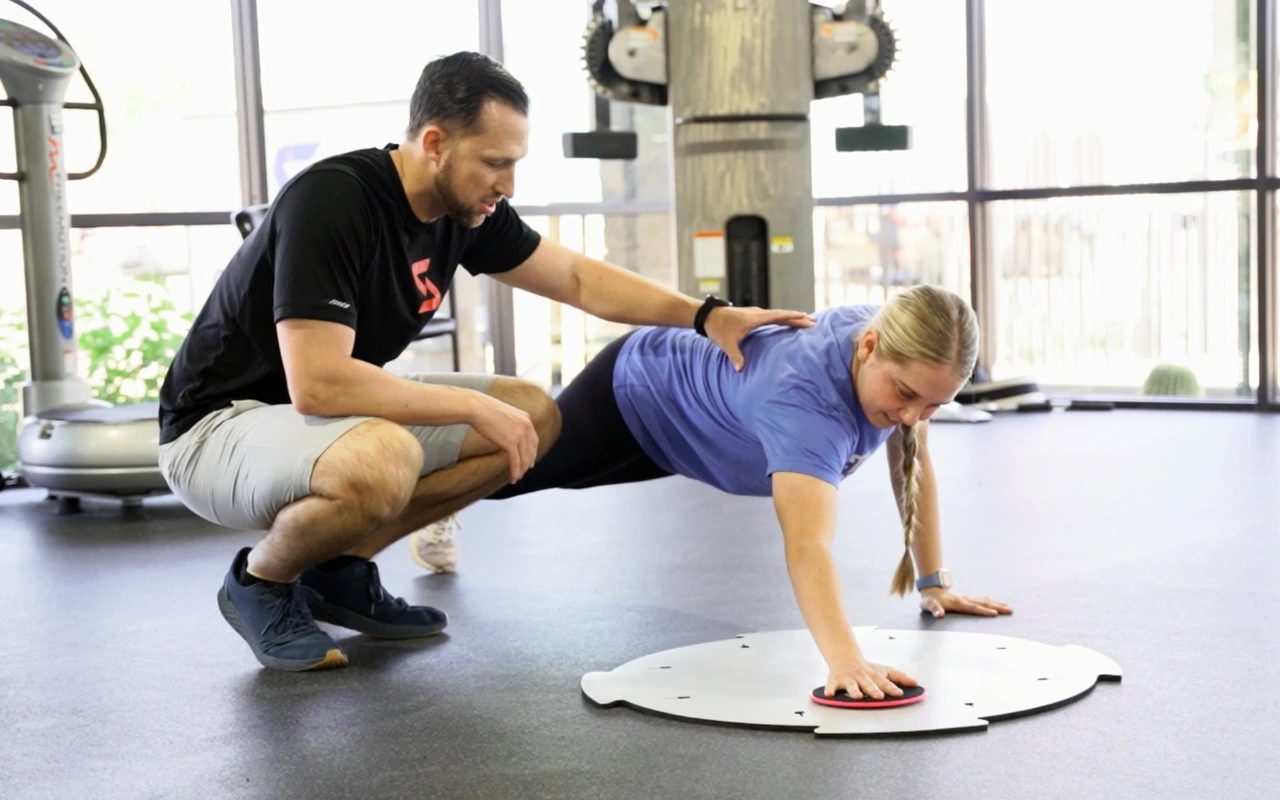By: Dillon Moeller, PT, DPT, FAFS
Frozen shoulder, also known as adhesive capsulitis, usually occurs when the capsule around the shoulder gets stiff, ultimately leading to the inability to move your shoulder in multiple directions. It can happen overnight, or it can happen following any sort of acute trauma.
It’s more common in females; there’s a nine to one ratio with females usually in their forties to sixties. Some precursor questions we like to ask are “Do you have any thyroid dysfunctions,” or “are you diabetic or pre-diabetic?” Usually, those two conditions are two main precursors or comorbidities that are associated with frozen shoulder research.
Frozen shoulder can be caused by acute trauma, such as falling on an outstretched hand or on your shoulder directly. To avoid pain, you may have put it in a sling or used some sort of guarding mechanism to immobilize the entire arm, which can cause poor mobility and, ultimately, lead to frozen shoulder.
Symptoms
The capsule around the shoulder joint itself gets really stiff and gets to the point where you can’t lift your arm at all. Your shoulder complex will literally feel stuck and can’t move past a certain point. Your range of motion overall will be greatly limited and there may be pain associated with movement.
Frozen Shoulder vs. Rotator Cuff Injuries
With frozen shoulder and rotator cuff injuries, your quality of movement will be similar. But with a frozen shoulder, you’ll have a different end feel where it feels stuck and can’t move, while a rotator cuff may feel weak and painful.
The quality and the quantity of movement is significantly different between frozen shoulder and rotator cuff injuries. With the frozen shoulder, if someone tries to actively raise their arm overhead, they will be stuck at a certain range of motion. When they are on the treatment table, and we do passive range of motion, they will have very similar range of motion in all directions.
With the rotator cuff strain or a tear, their active range of motion is significantly less than their passive range of motion, performed by a skilled physical therapist.
Physical Therapy for Frozen Shoulder
Seeing a skilled physical therapist for hands-on treatment to loosen up that capsule is vital. If your shoulder joint starts to feel “stuck,” it can greatly impact the ability of your shoulder blade to move on your ribcage and thorax, ultimately causing a domino effect. You may also start compensating into your elbow, wrist, or upper trap, or even start to experience headaches and mid-back pain. This ultimately leads to a lack of mobility in the entire upper quarter and shoulder.
I highly recommend patients to see a physical therapist for frozen shoulder, as, in some cases, it can take up to 19 to 24 months to regain full range of motion in all directions without pain or limitations. Based on experience and research, if you have it on one shoulder, you may be likely to have it again either on the same shoulder or opposite shoulder in the future.
Your doctor may prescribe anti-inflammatories or a steroid injection to calm some of that inflammation down and then refer you to physical therapy. There are noted, significant outcomes of doing both at the same time- based on the severity.
For frozen shoulder, we are looking to find that goldilocks zone of trying to improve your capsular mobility while not increasing your inflammation at the same time. This can mean moving your arm or other parts of your body to just bring movement into the shoulder capsule. As a patient, you may not know if you are making it worse, causing more inflammation, or improving your quality of movement with less pain provocation. A physical therapist can walk you through each stage of your freezing and help you regain strength and mobility.
Are you struggling with moving your arm post-injury? Schedule an appointment with a Spooner therapist today so we can help you move and feel your best.

